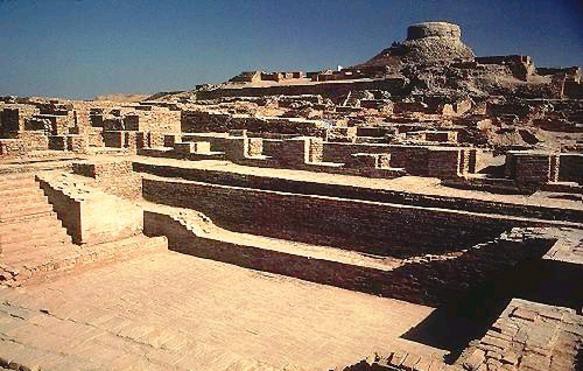GIẢI CHI TIẾT và DỊCH HOÀN THIỆN ĐỀ THI IELTS READING:
Could urban engineers learn from dance?
A
The way we travel around cities has a major impact on whether they are sustainable. Transportation is estimated to account for 30% of energy consumption in most of the world’s most developed nations, so lowering the need for energy-using vehicles is essential for decreasing the environmental impact of mobility. But as more and more people move to cities, it is important to think about other kinds of sustainable travel too. The ways we travel affect our physical and mental health, our social lives, our access to work and culture, and the air we breathe. Engineers are tasked with changing how we travel round cities through urban design, but the engineering industry still works on the assumptions that led to the creation of the energy-consuming transport systems we have now: the emphasis placed solely on efficiency, speed, and quantitative data. We need radical changes, to make it healthier, more enjoyable, and less environmentally damaging to travel around cities.
Cách mà chúng ta di chuyển quanh các thành phố có một tác động lớn lên việc liệu chúng có bền vững hay không. Giao thông vận tải được ước tính là chiếm khoảng 30% sự tiêu thụ năng lượng ở hầu hết các quốc gia phát triển nhất trên thế giới, do đó, việc giảm nhu cầu về các phương tiện sử dụng năng lượng là rất cần thiết trong việc giảm tác động môi trường của việc di chuyển. Nhưng càng nhiều người chuyển đến các thành phố, sẽ rất quan trọng khi nghĩ về những loài hình đi lại bền vững khác. Cách mà chúng ta đi lại ảnh hưởng sức khỏe thể chất và tinh thần, đời sống xã hội, khả năng tiếp cận công việc và văn hóa của chúng ta và không khí mà chúng ta thở. Những kỹ sư được giao nhiệm vụ thay đổi cách mà chúng ta đi lại quanh thành phố thông qua thiết kế đô thị nhưng ngành kỹ thuật xây dựng vẫn còn hoạt động dựa trên các giả định dẫn đến việc tạo ra các hệ thống giao thông tiêu thụ năng lượng mà chúng ta hiện có: sự tập trung chỉ được đặt vào tính hiệu quả, tốc độ và dữ liệu định lượng. Chúng ta cần những thay đổi triệt để nhằm giúp cho việc đi lại quanh các thành phố lành mạnh hơn, thú vị hơn và ít gây hại cho môi trường hơn.
B
Dance might hold some of the answers. That is not to suggest everyone should dance their way to work, however healthy and happy it might make us, but rather that the techniques used by choreographers to experiment with and design movement in dance could provide engineers with tools to stimulate new ideas in city-making. Richard Sennett, an influential urbanist and sociologist who has transformed ideas about the way cities are made, argues that urban design has suffered from a separation between mind and body since the introduction of the architectural blueprint.
Khiêu vũ có thể nắm giữ một vài câu trả lời. Điều đó không phải là gợi ý mọi người nên nhảy theo cách của mình để làm việc dù cho điều đó khiến chúng ta hạnh phúc và khỏe mạnh đến đâu đi chăng nữa, mà là gợi ý thử nghiệm các kỹ thuật do các biên đạo múa sử dụng và các động tác thiết kế có trong khiêu vũ có thể cung cấp cho các kỹ sư các công cụ nhằm kích thích các ý tưởng mới mẻ trong việc thực hiện đô thị. Richard Sennett một nhà xã hội học và đô thị học có tầm ảnh hưởng đã chuyển đối các ý tưởng về cách sắp đặt các thành phố lập luận rằng thiết kế đô thị đã phải chịu thiệt hại từ sự tách biệt giữa tâm trí và thân thể kể từ khi sự ra đời của các bản thiết kế kiến trúc.
C
Whereas medieval builders improvised and adapted construction through their intimate knowledge of materials and personal experience of the conditions on a site, building designs are now conceived and stored in media technologies that detach the designer from the physical and social realities they are creating. While the design practices created by these new technologies are essential for managing the technical complexity of the modern city, they have the drawback of simplifying reality in the process.

1. Mua bộ đề gần 400 bài ielts reading - Dịch và giải chi tiết Chỉ 199k bao gồm toàn bộ đề trong bộ Cambridge ( từ bộ 1 -19) và nhiều đề thi thực tế ( xem danh sách 400 đề ielts reading tại đây). Xem bài mẫu tại đây, Bài mẫu 1, bài mẫu 2, bài mẫu 3. Giải đề bao gồm phần dịch bài đọc, dịch phần câu hỏi, giải thích chi tiết, có thể tải về, in phần đề để luyện tập, phần dịch và giải xem online.
>>>>>>>>> Đặc biệt tặng kèm Dịch và giải chi tiết bộ đề Ielts listening từ Cam 10-18 và tặng kèm hơn 300 đề Ielts thực tế ( không có lời giải chi tiết chỉ có đề và đáp án) ( khác với bộ 400 đề ở trên). Vui lòng điền thông tin theo form tại đây và thanh toán theo thông tin CK trong form.
2. Đặc biệt dành tặng 100 bạn hoàn thành buổi học thử miễn phí khóa học Ielts Speaking online 1 kèm 1, các bạn sẽ được tặng bộ đề 400k bài Ielts reading và bộ đề Ielts Listening bộ Cam từ 10-18 gồm bài dịch và giải chi tiết, giải thích từ vựng khó ( thời hạn sử dụng trong vòng 2 tháng). Xem thông tin khóa học Ielts Speaking online 1 kèm 1 và đăng ký học thử tại đây.
D
To illustrate, Sennett discusses the Peachtree Center in Atlanta, USA, a development typical of the modernist approach to urban planning prevalent in the 1970s. Peachtree created a grid of streets and towers intended as a new pedestrian-friendly downtown for Atlanta. According to Sennett, this failed because its designers had invested too much faith in computer-aided design to tell them how it would operate. They failed to take into account that purpose-built street cafés could not operate in the hot sun without the protective awnings common in older buildings, and would need energy-consuming air conditioning instead, or that its giant car park would feel so unwelcoming that it would put people off getting out of their cars. What seems entirely predictable and controllable on screen has unexpected results when translated into reality.
E
The same is true in transport engineering, which uses models to predict and shape the way people move through the city. Again, these models are necessary, but they are built on specific world views in which certain forms of efficiency and safety are considered and other experiences of the city ignored. Designs that seem logical in models appear counter-intuitive in the actual experience of their users. The guard rails that will be familiar to anyone who has attempted to cross a British road, for example, were an engineering solution to pedestrian safety based on models that prioritise the smooth flow of traffic. On wide major roads, they often guide pedestrians to specific crossing points and slow down their progress across the road by using staggered access points that divide the crossing into two – one for each carriageway. In doing so they make crossings feel longer, introducing psychological barriers greatly impacting those that are the least mobile, and encouraging others to make dangerous crossings to get around the guard rails. These barriers don’t just make it harder to cross the road: they divide communities and decrease opportunities for healthy transport. As a result, many are now being removed, causing disruption, cost, and waste.
F
If their designers had had the tools to think with their bodies – like dancers – and imagine how these barriers would feel, there might have been a better solution. In order to bring about fundamental changes to the ways we use our cities, engineering will need to develop a richer understanding of why people move in certain ways, and how this movement affects them. Choreography may not seem an obvious choice for tackling this problem. Yet it shares with engineering the aim of designing patterns of movement within limitations of space. It is an art form developed almost entirely by trying out ideas with the body, and gaining instant feedback on how the results feel. Choreographers have deep understanding of the psychological, aesthetic, and physical implications of different ways of moving.
G
Observing the choreographer Wayne McGregor, cognitive scientist David Kirsh described how he ‘thinks with the body’, Kirsh argues that by using the body to simulate outcomes, McGregor is able to imagine solutions that would not be possible using purely abstract thought. This kind of physical knowledge is valued in many areas of expertise, but currently has no place in formal engineering design processes. A suggested method for transport engineers is to improvise design solutions and instant feedback about how they would work from their own experience of them, or model designs at full scale in the way choreographers experiment with groups of dancers. Above all, perhaps, they might learn to design for emotional as well as functional effects.
>>>> Xem thêm:
♦ Tổng hợp câu trả lời, câu hỏi, từ vựng của hơn 70 chủ đề Ielts Speaking part 1
♦ Tổng hợp gần 400 đề thi Ielts reading ( bao gồm dịch, giải chi tiết, từ vựng)
Questions 1-6
Reading Passage 1 has seven paragraphs, A-G.
Which paragraph contains the following information?
Write the correct letter, A-G, in boxes 1-6 on your answer sheet.
1 reference to an appealing way of using dance that the writer is not proposing
2 an example of a contrast between past and present approaches to building
3 mention of an objective of both dance and engineering
4 reference to an unforeseen problem arising from ignoring the climate
5 why some measures intended to help people are being reversed
6 reference to how transport has an impact on human lives
Questions 7-13
Complete the summary below.
Choose ONE WORD ONLY from the passage for each answer.
Write your answers in boxes 7-13 on your answer sheet.
Guard rails
Guard rails were introduced on British roads to improve the 7…………………… of pedestrians, while ensuring that the movement of 8……………………. is not disrupted. Pedestrians are led to access points, and encouraged to cross one 9…………………….. at a time.
An unintended effect is to create psychological difficulties in crossing the road, particularly for less 10………………….. people. Another result is that some people cross the road in a 11……………………. way. The guard rails separate 12……………………., and make it more difficult to introduce forms of transport that are 13…………………….
ĐÁP ÁN, GIẢI CHI TIẾT và DỊCH HOÀN THIỆN ĐỀ THI IELTS READING:
Could urban engineers learn from dance?

Questions 1-6
Reading Passage 1 has seven paragraphs, A-G.
Which paragraph contains the following information?
Write the correct letter, A-G, in boxes 1-6 on your answer sheet.
1B reference to an appealing way of using dance that the writer is not proposing
Đề cập về một cách sử dụng vũ đạo thú vị mà người viết không đề xuất
Giải thích: đoạn B
That is not to suggest everyone should dance their way to work, however healthy and happy it might make us, but rather that the techniques used by choreographers to experiment with and design movement in dance could provide engineers with tools to stimulate new ideas in city-making.
2C an example of a contrast between past and present approaches to building
Một ví dụ về sự trái ngược giữa các phương pháp quá khứ và hiện đại trong xây dựng
Giải thích: đoạn C
Whereas medieval builders improvised and adapted construction through their intimate knowledge of materials and personal experience of the conditions on a site, building designs are now conceived and stored in media technologies that detach the designer from the physical and social realities they are creating.
3F mention of an objective of both dance and engineering
Đề cập một mục tiêu chung của vũ đạo và kỹ thuật
Giải thích: đoạn F
Choreography may not seem an obvious choice for tackling this problem. Yet it shares with engineering the aim of designing patterns of movement within limitations of space.
Questions 7-13
Complete the summary below.
Choose ONE WORD ONLY from the passage for each answer.
Write your answers in boxes 7-13 on your answer sheet.
Guard rails ( Hành lang bảo vệ)
Guard rails were introduced on British roads to improve the 7……… safety…………… of pedestrians, while ensuring that the movement of 8………traffic……………. is not disrupted.
Các hành lang bảo vệ được đưa vào trên các con đường ở Anh để cải thiện sự an toàn của người đi bộ, trong khi đảm bảo sự di chuyển của giao thông không bị gián đoạn
Pedestrians are led to access points, and encouraged to cross one 9…………carriageway………….. at a time.
Người đi bộ được dẫn đến các điểm tiếp cận và được khuyến khích băng qua một làn đường cùng lúc.
1. Mua bộ đề gần 400 bài ielts reading - Dịch và giải chi tiết Chỉ 199k bao gồm toàn bộ đề trong bộ Cambridge ( từ bộ 1 -19) và nhiều đề thi thực tế ( xem danh sách 400 đề ielts reading tại đây). Xem bài mẫu tại đây, Bài mẫu 1, bài mẫu 2, bài mẫu 3. Giải đề bao gồm phần dịch bài đọc, dịch phần câu hỏi, giải thích chi tiết, có thể tải về, in phần đề để luyện tập, phần dịch và giải xem online.
>>>>>>>>> Đặc biệt tặng kèm Dịch và giải chi tiết bộ đề Ielts listening từ Cam 10-18 và tặng kèm hơn 300 đề Ielts thực tế ( không có lời giải chi tiết chỉ có đề và đáp án) ( khác với bộ 400 đề ở trên). Vui lòng điền thông tin theo form tại đây và thanh toán theo thông tin CK trong form.
2. Đặc biệt dành tặng 100 bạn hoàn thành buổi học thử miễn phí khóa học Ielts Speaking online 1 kèm 1, các bạn sẽ được tặng bộ đề 400k bài Ielts reading và bộ đề Ielts Listening bộ Cam từ 10-18 gồm bài dịch và giải chi tiết, giải thích từ vựng khó ( thời hạn sử dụng trong vòng 2 tháng). Xem thông tin khóa học Ielts Speaking online 1 kèm 1 và đăng ký học thử tại đây.
ĐÁP ÁN:
1. B
2. C
3. F
4. D
5. E
6. A
7. safety
8. traffic
9. carriageway
10. mobile
11. dangerous
12. communities
13. healthy

.png)





